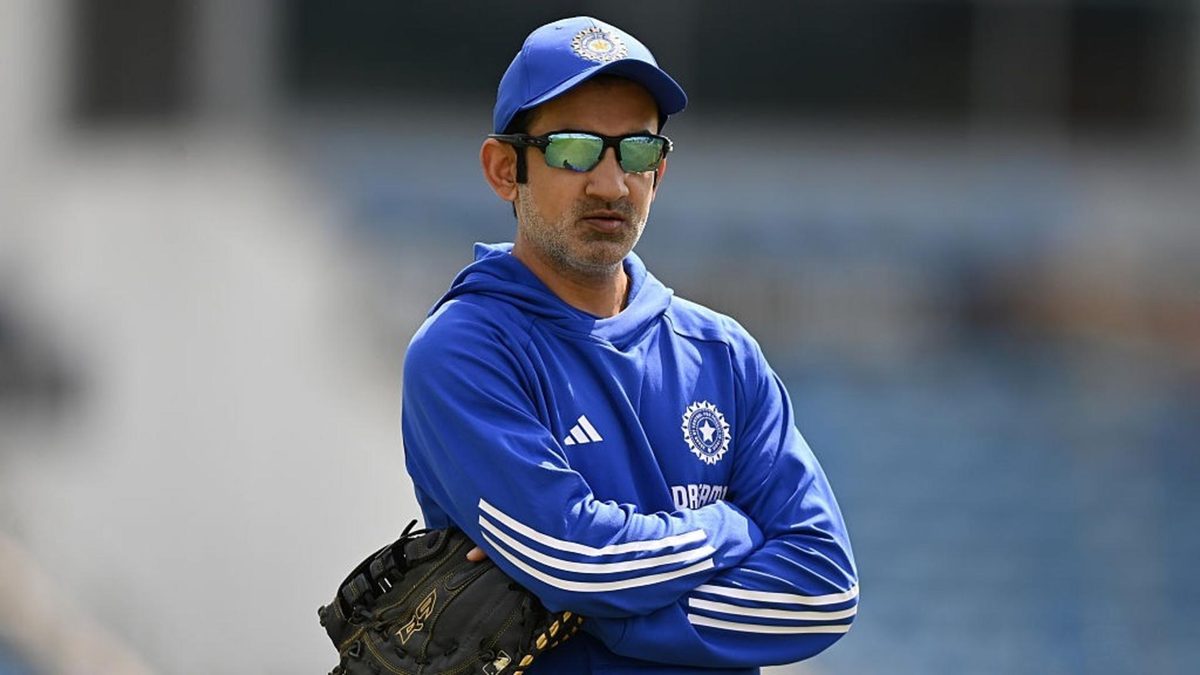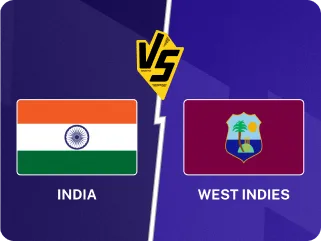
Gautam Gambhir recently completed a year in charge of the Indian men's team. Rahul Iyer evaluates his tenure so far, and outlines what lies ahead.
India have just come off a pulsating Test victory at The Oval, earning them a drawn series in England to round off Gautam Gambhir’s first year as head coach of the Indian men’s cricket team.
With a contract that runs until the 2027 ODI World Cup, roughly a third of his tenure has elapsed so far; as good a time as any to take a pause and evaluate his time in the role thus far.
India's Gambhir era gets off to a (largely) smooth start
The former opener was appointed despite the lack of a real coaching CV behind him – Gambhir’s only previous experience was as a mentor for IPL teams Lucknow Super Giants and Kolkata Knight Riders.
The “mentor” role is among cricket’s most nebulous – Andy Flower at LSG and Chandrakant Pandit at KKR were formally the head coaches during Gambhir’s time in that role – but in all fairness to him, KKR won the title while he was part of the backroom staff, just before he took over the India job.
His first series was a white-ball tour of Sri Lanka. India won the T20Is 2-0 and lost the ODIs 0-2, with one tie in each format. The latter was a first in 27 years against their island neighbours.
That series itself showed the first signs of Gambhir’s T20 thinking coming to the fore, even in longer formats. With plenty of spin employed by Sri Lanka after their pace stocks were decimated by injury, India shuffled their batting order almost all the way down to ensure left-right batting partnerships. Pinning that loss on the coach would be harsh though, as Sri Lanka were armed to the teeth with bowling depth, in favourable home conditions.
A home Test series against Bangladesh provided the perfect bedding-in for Gambhir the red-ball coach – with a well-established template and players, India cruised to a 2-0 win, including an incredible victory in Kanpur in a rain-shortened game.
Against the same opponent in three T20Is, India inflicted another whitewash, even racking up 297-6 in one innings along the way. The story of the series was mystery spinner Varun Chakravarthy’s emphatic return to the international arena, following a stellar IPL campaign.
So far, so good.
Setback No.1: New Zealand whitewash India
But the following home series against New Zealand saw the first signs of the knives being drawn at Gambhir. India’s proud home record – they remained unbeaten in every series since 2012 – came crashing down when the Kiwis pulled off one of the greatest heists in recent Test history.
For the first time under Gambhir, the result was shambolic, and captain Rohit Sharma’s intended light-hearted remark (“We are allowed [to lose a home Test series] once in 12 years”) only turned incendiary.
Perhaps more worryingly for India, the team management began to show its first signs of confusion.
India were shot out for 46 in Bengaluru in the first innings of the series, after which Gambhir backed KL Rahul to retain his spot at No.6 in the side. Shubman Gill had missed the game through injury and India opted to push Virat Kohli up a spot, rather than move Rahul (a regular top-order batter) from his new role.
Between the first and second Tests, India also added Washington Sundar to the squad, the day after he scored a Ranji Trophy century against Delhi, batting at No.3. Assistant coach Ryan ten Doeschate claimed the decision was taken based on Sundar’s off-spin matching up against New Zealand’s four left-handed batters.
For the next Test in Pune, despite Gambhir’s backing, Rahul was axed as Gill returned. Sundar also made the playing XI, replacing a specialist spinner in Kuldeep Yadav and leapfrogging another spin-bowling all-rounder in Axar Patel, who was already with the team.
To India’s credit, Sundar did end up with 11 wickets in his first Test in over four years, and took five in the subsequent Test in Mumbai even as India lost both.
The series result as a whole though, was perhaps a freak one – being bowled out for 46, and Mitchell Santner taking 13 wickets (he had never taken more than three in a Test innings before) sealed the deal even before the third Test saw Ajaz Patel run through India with 11 wickets.
Between the New Zealand Tests and the Border-Gavaskar Trophy that began in November, India beat South Africa 3-1 in a T20I series overseen by VVS Laxman. Curiously, that squad included left-arm quick Yash Dayal, who had been called up for the Bangladesh Tests, but not the T20Is, nor the New Zealand Tests.
2024/25 BGT intensifies heat on Gambhir
India were always up against it when they headed Down Under, and another crack in their thought processes began to show as KL Rahul was called upon to open in Rohit Sharma’s absence (remember, he had been backed to remain at No.6).
It was during this tour that Gambhir’s blind spot came through. Despite saying the right things – that 20 wickets, but not even 1,000 runs will win Test matches – India persisted with a team combination that effectively saw them use only three regular bowlers.
Harshit Rana was handed a debut at Perth, when India won, but was dropped immediately after a difficult outing in his second Test at Adelaide. He has yet to play another one.
After the first couple of Tests, it was clear that all-rounder Nitish Kumar Reddy was not yet up to scratch as a threatening bowler in the longest format. India continued to play him virtually as a pure batter, seemingly wanting, even at the cost of wickets, to stretch their batting to No.8.
Jasprit Bumrah delivered a series for the ages (32 wickets at 13), and yet the lasting impression of that tour is likely to be his exhausted voice in Melbourne, telling his captain that he could go on no longer after, inevitably, he was the man India looked to for a breakthrough.
In the following match, India once again played eight batters, and Bumrah’s back gave way. He broke down midway through the Sydney Test, did not take part in the second innings, and was out until late April. India lost the series 3-1, their only win coming courtesy of his ridiculous opening spell in Perth. Test stalwart R Ashwin also retired midway through the tour. He only played once, and perhaps anticipated that he would not be used in England either.
India's limited-overs machine motors along
All the while, though, India’s white-ball juggernaut continued on. They smashed England 4-1 in a home T20I series, and 3-0 in the following ODI series. This was not without its own off-field controversy though, as a ten-point plan came through from the BCCI, mandating participation in domestic cricket and limiting players’ family time on tour, among other things.
On the field, Chakravarthy continued to excel, even making his ODI debut during the series. The likes of Abhishek Sharma, Sanju Samson and Tilak Varma all powered India’s batting muscle as well.
Perhaps the crowning moment of Gambhir’s tenure so far, came in February as India lifted the Champions Trophy. Assisted somewhat by the BCCI’s boardroom heft, India ended up with the luxury of playing all of their matches in Dubai while other teams shuttled between different grounds.
That comfort notwithstanding, India had to grind things out in the semi-final and final, and their four spinners eventually choked the life out of opposition sides. It must be mentioned that even here, India made a late change to include Chakravarthy in the squad, in place of opener Yashasvi Jaiswal.
England tour ends well – but do India have the right processes in place?
Between the Champions Trophy and the England tour, India lost the services of Rohit Sharma and Virat Kohli in Test cricket. A section of fans is convinced they were pushed out by Gambhir – but are split on whether that was for better or worse.
What it undoubtedly did, though, was put India’s red-ball side in a state of transition and firmly cement the period henceforth as the Gill-Gambhir era; the Punjab batter became a rare Indian Test captain from outside the traditional cricketing powerhouses of Delhi, Mumbai, Kolkata, Chennai, Hyderabad and Bangalore.
A pulsating England series is fresh in the memory, but so are the Indian team’s missteps. Even the breaking down of India’s greatest-ever fast bowler could not convince Gambhir to compromise on the idea of having batters until No.8 – this despite Gill’s saying in no uncertain terms that India were willing to, at times, play even four tail-enders in the pursuit for wickets. India did not do that even once.
When Shardul Thakur played, he gave India runs in one innings out of four, and was strangely underbowled; seemingly, not trusted by his captain. On a green pitch at The Oval, India ran Mohammed Siraj, Prasidh Krishna and Akash Deep into the ground, just as they had done with Bumrah in Australia six months prior – in fact, part of the reason he was limited to three Tests in England was to manage his workload (and/or any injury). He was even released from the squad before the fifth Test.
Amid old problems of their combination, India’s approach to the No.3 spot also raised questions, with knee-jerk switches between debutant Sai Sudharsan and the returning Karun Nair.
India kept Harshit Rana around the squad for the first Test as cover, but when they had injury issues later in the series, Anshul Kamboj was flown in, having returned to India. He walked off the plane, debuted at Old Trafford ahead of Krishna and bowled at under 130kph to return 1-89 in 18 overs, only for Krishna to return for the series finale.
How then, must India evaluate Gambhir’s tenure? The answer, perhaps, is with no great amount of optimism yet. That is harsh in the warm afterglow of the Oval win, but rather more fair in the cold light of day.
Gambhir’s fingerprints are distinctive; he is combative, prickly and not bothered with maintaining a friendly veneer with the press. None of this should count against him in terms of sporting merit, but bombastic comments about India’s team “fighting for the common man”, and other ill-advised ones towards people who are “just groundsmen” do grate somewhat more.
In a cricketing sense, it is clear he prefers runs over wickets at No.8 in Test cricket, and is willing to fall on his sword of left-right combinations in all formats of the game. Both strategies have some merit in white-ball cricket but both appear flawed at various points in the red-ball format. No wonder then, that India’s win-loss record reads 12-2 in T20Is, 8-2 in ODIs and 5-8 in Tests since Gambhir took over.
There is, however, also the tricky condition that India’s talent pool is considerably deeper in white-ball cricket than in Test cricket, and considerably deeper than any other team in the world.
This effectively creates a no-win situation from a coach’s point of view – stay successful, and it is hard to look beyond the players themselves. But if the results drop, pelters will follow (how can so much talent be mis-managed?).
What's next for Gambhir?
The truest test of his credentials remains in the longest format; one where India have floundered tactically so far. This is simpler to pinpoint than the white-ball record, since it has continued across two captains (three if you count Bumrah as a stand-in) and two marquee Test series.
The coach’s main successes so far remain player-centric. Not many would have recalled Varun Chakravarthy to the national set-up at the age of 33, and Gambhir clearly puts much stock in Washington Sundar, across formats – both have repaid his faith handsomely so far.
With four home Tests next on the horizon, the first task, results-wise, will be to avoid a repeat of the New Zealand series. The second will be to establish a pecking order of quicks – if India truly want to compete and win abroad they will first have to develop a reliable talent pool beyond Siraj and Bumrah.
In the white-ball formats, the biggest challenge for Gambhir will come in 50-over cricket, and how to manage what are likely to be the final years of Rohit Sharma and Virat Kohli’s international careers. At this point, both remain among the premium ODI batters of their generation. But without regular match practice (even in other formats), will they last until the 2027 World Cup? And if not, what is India’s contingency plan?
In the immediate-term, Gambhir and India’s focus will be on the Asia Cup in what is both his and the team’s strongest format by far – it is the best of headaches to choose from Abhishek Sharma, Sanju Samson, Shubman Gill, Yashasvi Jaiswal and Sai Sudharsan, just for your opening spots. An Asia Cup, Champions Trophy and a drawn Test series in England with a transitional side, in just over a year in charge would be a solid set of results to put against Gambhir’s name.
As long as they continue to come, his job is unlikely to be in any danger. But if India want consistent improvement, there needs to be a more critical eye on the processes that go on behind them.
Follow Wisden for all England vs India updates, including live scores, latest news, team lineups, schedule and more. The live streaming details for the ENG vs IND series in India, UK, USA and rest of the world can be found here. For Wisden quizzes, head here.








